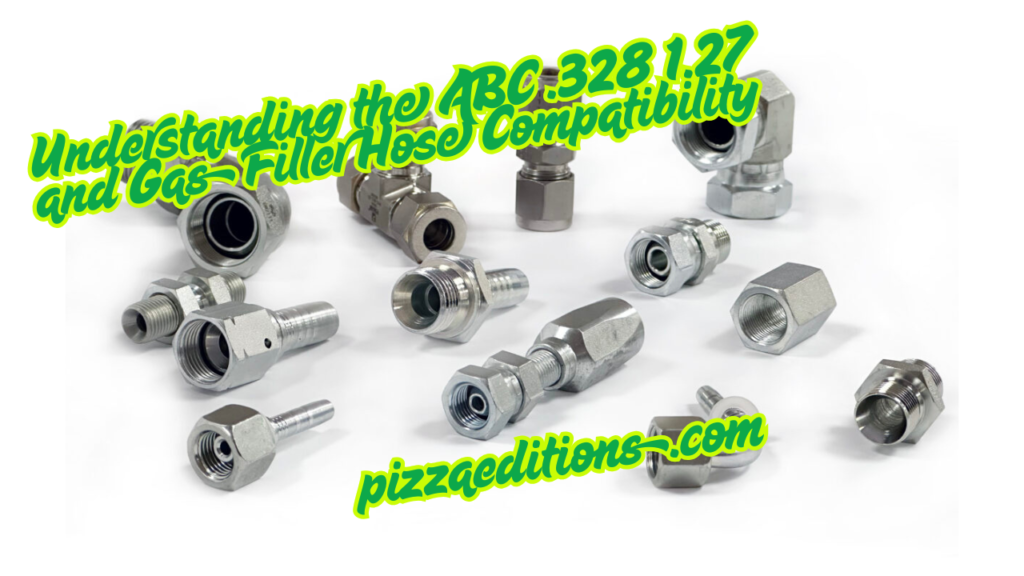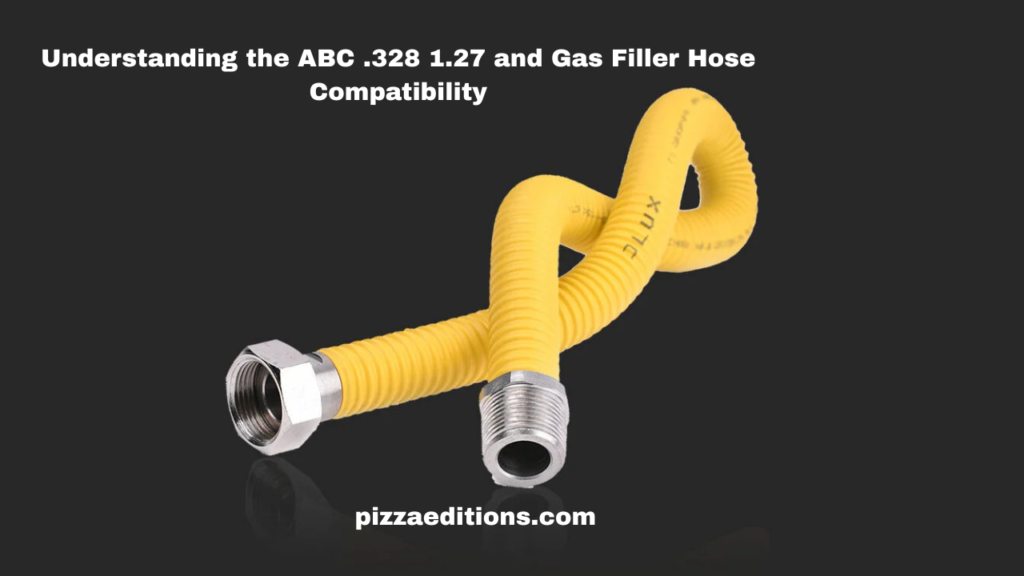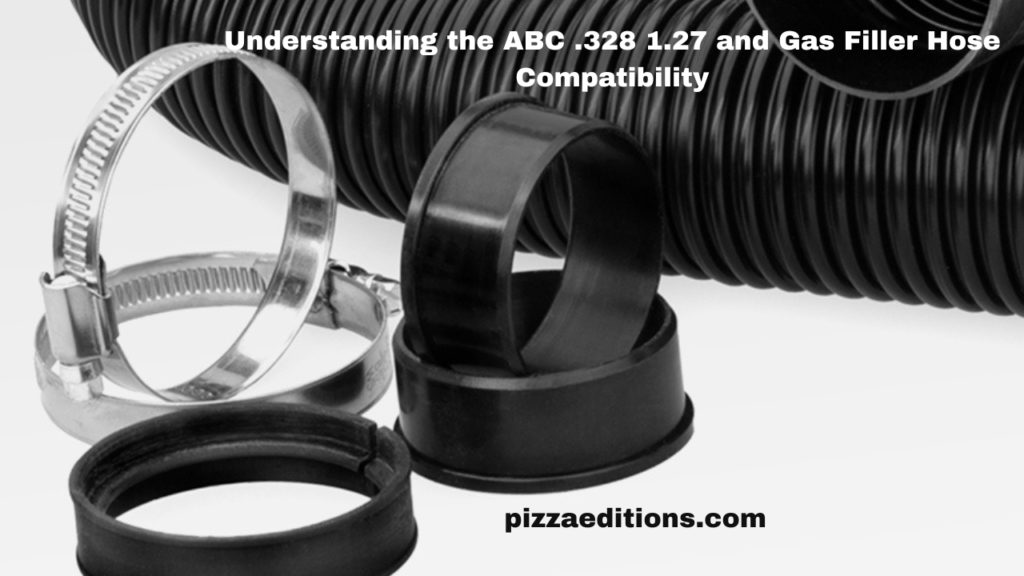In the world of industrial and automotive applications, hose compatibility is critical to both performance and safety. One technical specification that often sparks questions is ABC .328 1.27, especially when related to gas filler hose compatibility. While the numbers and codes may look cryptic, they represent vital information regarding size, material, and use-case appropriateness.
This article dives deep into Understanding the ABC .328 1.27 and Gas Filler Hose Compatibility, exploring what these codes mean, why compatibility matters, and how these specifications are essential in various engineering, fueling, and mechanical contexts.
What Is ABC .328 1.27? Decoding the Numbers and Letters
The term ABC .328 1.27 is a technical designation, often seen in part catalogs or specification sheets. Here’s a breakdown of the components:
- ABC likely refers to a model or series type in a specific hose or fitting manufacturer’s catalog.
- .328 refers to a specific diameter — in inches, this translates to approximately 8.33 mm.
- 1.27, in most technical contexts, refers to 1.27 cm, or 12.7 mm, which could also denote internal or external diameters, or the measurement of another mating component.
Together, these numbers help define the physical dimensions of a hose or its associated fittings. Understanding these measurements ensures that the correct parts are matched for safe and efficient fluid or gas transfer, especially in applications involving volatile substances like gasoline.
Why Hose Compatibility Matters: Risks of Mismatched Components

When dealing with gas filler hoses, compatibility isn’t just about whether parts fit together — it’s about ensuring the materials and sizes can withstand the pressure, chemical composition, and environmental conditions of the system.
Gas filler hose compatibility involves several factors:
- Chemical Resistance: The hose material must resist corrosion and degradation from gas or other fuels.
- Pressure Rating: It must withstand operating pressures without bulging, cracking, or rupturing.
- Size Matching: Inner and outer diameters must precisely match connectors like the ABC .328 1.27 fittings.
- Thermal Tolerance: Since fueling often involves temperature shifts, hoses must be heat-resistant.
Mismatched fittings can lead to fuel leaks, fire hazards, or even system failure. That’s why understanding and matching specifications like ABC .328 1.27 with the appropriate gas filler hose is crucial.
Common Use Cases for ABC .328 1.27 Fittings and Gas Filler Hoses

In many industries, ABC .328 1.27 fittings are commonly used in:
- Automotive fuel systems (both consumer and commercial vehicles)
- Portable fuel containers and pumps
- Aviation and marine refueling applications
- Generators and industrial engines
In these use cases, the precision of the fitting-to-hose compatibility is non-negotiable. Not only must the size match, but the hose materials must be certified for fuel handling.
In the automobile sector, for instance, gas filler hoses are often constructed of nitrile rubber, fluorocarbon, or other elastomers. These materials are evaluated to conform with both U.S. and international gasoline hose requirements. ABC .328 1.27 fittings must be matched with appropriate hoses that maintain tight seals and do not deteriorate over time.
Material Considerations: How to Choose the Right Gas Filler Hose

Compatibility is not only about size but also about material performance. When selecting a hose that matches the ABC .328 1.27 standard, several material properties must be assessed:
1. Rubber (NBR, EPDM, etc.):
Rubber hoses are flexible, durable, and can withstand mild to moderate temperatures. They are excellent for automotive applications and general fuel transfer.
2. Fluoroelastomers (Viton):
These are suitable for high-end applications where chemical resistance is critical, especially for ethanol or methanol-based fuels.
3. Thermoplastics:
Lightweight and corrosion-resistant, these hoses are ideal for portable fueling or outdoor use.
In choosing a hose compatible with ABC .328 1.27, always verify that the inner diameter aligns with the .328 measurement and that the outer jacket supports fittings designed for 1.27 cm specs.
Installation Best Practices: Ensuring a Safe and Leak-Free Fit
Installing gas filler hoses and fittings like ABC .328 1.27 is a technical process. Here are key installation tips:
- Check for Defects: Inspect all hoses and fittings before installation for cracks or irregularities.
- Use Appropriate Clamps: Always use approved clamps or fasteners to ensure the connection stays tight over time.
- Avoid Excess Bending: Hoses should not be bent near the fitting, since this generates weak places prone to rupture.
- Test After Installation: Perform pressure and leak tests to ensure the system integrity is maintained.
These steps help prolong the life of both the hose and the ABC .328 1.27 fittings while preventing operational failures.
Maintenance and Inspection: Sustaining Long-Term Compatibility
Routine maintenance is vital. Even with a perfect match, hoses and fittings are subject to wear and aging. Here’s what to monitor:
- Visual Inspections: Look for swelling, discolouration, or cracking.
- Pressure Testing: Periodic testing under operational pressure assures continuous compatibility and performance.
- Replacement Schedule: Follow manufacturer specifications. Fuel hoses may require repair every 3-5 years, even with normal use.
Proper maintenance ensures that the ABC .328 1.27 and gas filler hose compatibility remains intact over the long term.
Troubleshooting Common Compatibility Issues
Even seasoned professionals may encounter problems. Some common issues include:
- Loose Connections: Usually caused by using a hose with a slightly larger or smaller internal diameter than .328.
- Fuel Leaks: Often due to degraded hoses or improper clamp pressure.
- Stiff or Brittle Hoses: Indicate material fatigue or chemical incompatibility.
The solution usually lies in reassessing the hose material and size in relation to the ABC .328 1.27 specification and replacing any worn-out parts.
Conclusion: Ensuring Optimal Use with Proper Understanding
Understanding the ABC .328 1.27 and Gas Filler Hose Compatibility is more than an exercise in decoding numbers — it’s about ensuring the integrity and safety of fuel systems across applications. From automotive refueling to industrial machinery, the precision of fitting selection and hose material choice cannot be overstated.
With accurate matching, proper installation, and regular inspection, systems that rely on ABC .328 1.27 fittings and gas filler hoses can operate efficiently and safely for years. Whether you’re a mechanic, an engineer, or a DIY enthusiast, staying informed about hose compatibility will help you make better, safer choices for any fuel-related system.
Also Read : Regulatory Pitfalls a Financial Localization Company Can Solve
